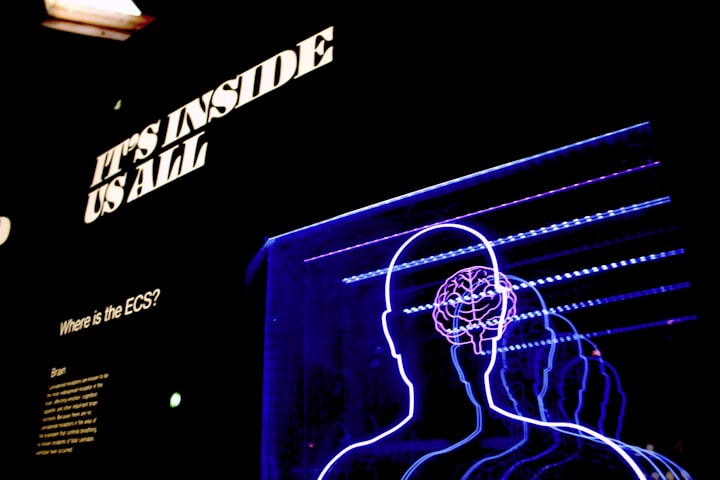Unlocking the Mysteries of Perception
How Our Brains Process the Present Moment

Introduction
In our daily lives, we perceive the world around us and experience the present moment. However, what may surprise you is that our perception of the "now" is actually slightly delayed. It takes approximately half a second for our brains to process incoming sensory information and translate it into conscious awareness. This delay in perception allows our brains to stitch together the different sensory inputs seamlessly and provide us with a coherent experience of the present. In this article, we will delve into the fascinating topic of perceiving time delay and explore how our brains construct the present moment.
1. The Delicate Balance of Perception
Our brains receive information from various sensory modalities, such as sight, sound, touch, taste, and smell. Each sense operates at its own pace, sending signals to the brain at different speeds. To create a unified experience of the present, our brains synchronize and integrate these inputs. This process involves a delicate balance between the speed of sensory input and the brain's ability to process and interpret that information.
1.1 The Stitching Process
Imagine your brain as a master weaver, diligently stitching together the sensory threads it receives. Each thread represents a different sensory input, and the brain combines them to create a cohesive fabric of perception. For example, when you see a ball rolling towards you, your brain integrates visual information with tactile sensations and auditory cues to give you a complete understanding of the event.
1.2 The Perceptual Delay
While the stitching process occurs rapidly, there is still a noticeable delay in our conscious perception of the present moment. This delay arises from the time it takes for sensory signals to travel from the sensory organs to the brain and for the brain to process and interpret those signals. It is estimated that this delay amounts to approximately half a second.
2. Playing Tricks on Our Perception
Researchers have discovered that they can manipulate our perception of time and create intriguing illusions. By removing the standard delay in our brain's processing, they can confuse our senses and make us believe that an effect occurred before its triggering action. These experiments demonstrate the malleability of our perception and highlight the complex nature of how our brains construct reality.
2.1 The Doorbell Illusion
One example of manipulating our perception is the doorbell illusion. In this scenario, the standard delay in perceiving a sound is removed, creating a situation where we hear the doorbell sound before actually pressing the button. This reversal of cause and effect tricks our brains into perceiving the sound as if it happened before the action that triggered it.
2.2 The Workload of Conscious Minds
Our conscious minds are tasked with processing and interpreting the world around us. We constantly analyze information, anticipate the future, and make decisions based on our understanding. However, this mental processing takes time. Our brains need to translate sensory inputs, evaluate potential outcomes, and choose the appropriate response. This workload can make our conscious minds susceptible to illusions and manipulations of perception.
2.3 Automatic Responses and the Speed of Thought
While our conscious minds are occupied with complex cognitive tasks, our brains have developed automatic response systems to handle immediate dangers. The startle reflex, triggered by sudden noises or movements, allows us to react within milliseconds, activating our muscles and initiating a physical response even before we consciously process the situation. Similarly, actions performed within half a second, such as catching a ball or making split-second decisions, occur automatically, bypassing conscious decision-making processes.
3. The Adaptive Advantage of Time Delay
At first glance, the delay in our perception might seem like a disadvantage, as it introduces a temporal gap between the actual events and our conscious awareness. However, this time delay actually serves an important adaptive purpose.
3.1 Temporal Binding and Multisensory Integration
The temporal binding hypothesis suggests that our brains use the time delay to bind together sensory information from different modalities that are related to the same event. By synchronizing the inputs and merging them into a coherent percept, our brains create a unified experience of the present moment.
For example, imagine watching a movie where the visual and auditory cues are perfectly synchronized. The time delay allows us to perceive the dialogue and actions as happening simultaneously, even though the sound and visuals reach our sensory organs at different speeds.
3.2 Perceptual Stability and Prediction
The time delay also plays a crucial role in maintaining perceptual stability. Our brains constantly make predictions about the immediate future based on past experiences and contextual information. By introducing a slight delay in perception, our brains have enough time to anticipate and integrate incoming sensory inputs, resulting in a more stable and coherent perception of the world.
For instance, when we move our gaze from one object to another, our brains generate predictions about the likely visual changes that will occur. The time delay allows our brains to align these predictions with the actual visual feedback, ensuring a smooth and continuous perceptual experience.
3.3 Conscious Awareness and Decision-Making
Conscious awareness and decision-making processes also benefit from the time delay. By allowing sensory inputs to reach a certain threshold of processing before entering conscious awareness, our brains can filter out irrelevant or inconsequential information. This selective attention enables us to focus on the most salient and meaningful aspects of our environment, enhancing our ability to make informed decisions.
Additionally, the time delay grants us a brief window of opportunity to modify our actions based on incoming sensory information. If our perception were instantaneous, we would have limited time to adjust our behavior in response to changing circumstances. The delay gives us the chance to adapt and optimize our actions in real-time.
Conclusion
The perception of time delay is a fascinating aspect of human cognition. While our brains construct the present moment slightly after it occurs, this delay allows for the integration of multisensory inputs, prediction-based processing, perceptual stability, and conscious decision-making. Our perception of the world is not a direct reflection of reality but a carefully constructed representation shaped by the intricate workings of our brains. Understanding the mechanisms behind perceiving time delay sheds light on the remarkable complexities of human perception and cognition.






Comments
There are no comments for this story
Be the first to respond and start the conversation.